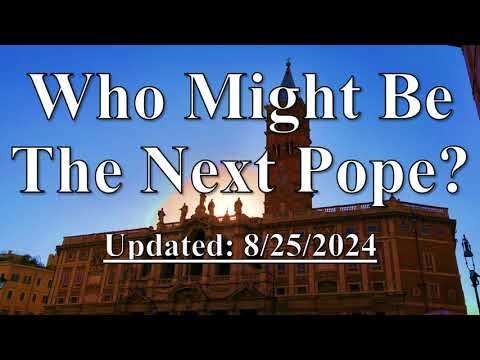Exploring the Themes of Octavia Butler’s ‘Parable of the Sower’
In Parable of the Sower, Octavia Butler masterfully weaves a gripping narrative that explores themes of survival, resilience, and the quest for a better future in a dystopian world. Set against a backdrop of societal collapse and environmental chaos, the story follows Lauren Olamina, a young woman armed with a unique ability to feel the pain of others and a visionary philosophy she calls Earthseed. Butler’s poignant storytelling and rich character development invite readers to reflect on the complexities of humanity and the power of hope, making this novel a profound commentary on our contemporary struggles and aspirations.
What lessons does Parable of the Sower teach?
The Parable of the Sower teaches resilience, the importance of community, adaptability in crisis, and the necessity of envisioning a better future.
What is the recommended reading order for Octavia Butler’s books?
When diving into Octavia Butler’s captivating universe, it’s essential to consider the order that best enhances your reading experience. The Patternist Series showcases a fascinating interplay of characters and themes that evolve throughout the books. While the release order starts with “Patternmaster” and progresses through “Mind of My Mind,” “Survivor,” “Wild Seed,” and “Clay’s Ark,” the internal chronology presents a different path, beginning with “Wild Seed,” followed by “Mind of My Mind,” then “Clay’s Ark,” “Survivor,” and concluding with “Patternmaster.”
Choosing the in-universe chronology allows readers to fully appreciate the development of Butler’s intricate world and the interconnectedness of her characters. Starting with “Wild Seed” sets the stage for understanding the origins of the Patternists, while following the chronological journey creates a richer narrative experience. This approach not only deepens your grasp of the series but also highlights Butler’s masterful storytelling and the profound themes of power, identity, and connection that resonate throughout her work.
Is Parable of the Sower a simple book to read?
Parable of the Sower presents a challenging reading experience, primarily due to Octavia Butler’s profound narrative style. The story unfolds in a dystopian future where societal collapse has led to chaos and violence, making the environment both gripping and unsettling. Readers are thrust into a world rife with danger, where survival is a constant struggle and the weight of despair looms heavily.
At the center of this turmoil is Lauren, a character marked by her unique condition of hyperempathy, which makes her acutely aware of the pain and emotions of those around her. This sensitivity not only amplifies her personal struggles but also complicates her interactions in a cruel society filled with threats from pyromaniacs and marauding gangs. As readers follow her journey, they are invited to grapple with the emotional intensity of her experiences, which can be both illuminating and overwhelming.
While the novel’s themes are profound and thought-provoking, the stark realities of Lauren’s world create a reading experience that demands resilience. Butler’s ability to weave a narrative that is both compelling and harrowing challenges readers to confront uncomfortable truths about humanity and survival. Ultimately, this book is not just a story; it is an exploration of empathy in the face of adversity, making it a rewarding yet demanding read.
Is the Parable of the Sower frightening?
“Parable of the Sower” by Octavia Butler immerses readers in a hauntingly plausible future that is both captivating and unsettling. The story unfolds through the eyes of Lauren Olamina, whose journey begins with her diary entries in July 2024, a date that feels alarmingly close as we approach the near future. Butler’s vivid world-building paints a stark picture of societal collapse, making the reader confront the frightening realities of a world plagued by climate change, economic instability, and violence.
While the narrative is undeniably intense, it transcends mere horror, inviting readers to reflect on their own lives and the choices that shape our communities. Lauren’s struggle for survival and her quest for a better future resonate deeply, challenging us to consider what we would do in similar circumstances. The exploration of fear and resilience within the text not only captivates but also compels us to confront our own anxieties about the future.
Ultimately, “Parable of the Sower” is a thought-provoking blend of speculative fiction and social commentary that elicits a sense of urgency. Its blend of terror and hope encourages readers to envision their role in shaping a more equitable world. As we navigate our own realities, Butler’s work serves as a powerful reminder of the importance of empathy and action in the face of uncertainty.
Unpacking Resilience in a Dystopian World
In a world increasingly fraught with challenges, resilience emerges as a vital lifeline, allowing individuals and communities to navigate the shadows of despair. As society grapples with environmental degradation, social unrest, and technological upheaval, the ability to adapt becomes paramount. Resilience is not merely about survival; it embodies a proactive spirit that fosters innovation and connection amidst adversity. By cultivating mental fortitude and nurturing supportive relationships, people can transform their struggles into pathways for growth, redefining what it means to thrive in a dystopian landscape. In this intricate dance of hope and hardship, resilience stands as a beacon, illuminating the way forward.
The Power of Community in Times of Crisis
In moments of crisis, the strength of a community emerges as a vital force that can transform despair into hope. When individuals come together, they create a network of support that fosters resilience and shared purpose. Whether facing natural disasters, public health emergencies, or social upheaval, communities can mobilize resources, share knowledge, and provide emotional backing, proving that collective action is often more powerful than isolated efforts.
During challenging times, the bonds formed within communities can lead to innovative solutions and adaptive strategies. Neighbors rally to assist each other, local organizations step up to provide essential services, and volunteers emerge from all walks of life to lend a helping hand. This collaborative spirit not only addresses immediate needs but also lays the groundwork for long-term recovery and growth. By pooling their strengths and skills, communities can navigate crises more effectively and emerge stronger than before.
Moreover, the experience of overcoming adversity together can deepen relationships and foster a sense of belonging. In the aftermath of a crisis, the shared stories and collective struggles become a part of the community’s identity, instilling pride and solidarity. As individuals reflect on their experiences, they often find renewed appreciation for their neighbors and an understanding of the importance of connection. Ultimately, it is this spirit of unity that empowers communities to thrive, turning challenges into opportunities for growth and transformation.
Nature and Survival: Lessons from Butler
In the heart of the wilderness, nature reveals its profound wisdom, teaching us resilience and adaptability. Butler’s experiences in the wild exemplify the delicate balance between survival and harmony with the environment. His encounters with diverse ecosystems illustrate how every element, from the smallest insect to the tallest tree, plays a decisivo role in maintaining the intricate web of life. By observing these interactions, we learn that survival is not merely about enduring challenges, but also about understanding and respecting the world around us.
Butler’s journey serves as a powerful reminder of our interconnectedness with nature. Each challenge he faced became an opportunity to adapt and innovate, showcasing the importance of flexibility in the face of adversity. The lessons drawn from his survival tactics encourage us to cultivate a deeper appreciation for the natural world, inspiring us to embrace sustainable practices in our daily lives. By integrating these insights, we can foster a more harmonious existence, ensuring that we thrive alongside the ecosystems that sustain us.
Visionary Leadership in Uncertain Times
In today’s rapidly changing world, visionary leadership stands as a beacon of hope amidst uncertainty. Leaders who embrace a forward-thinking mindset foster adaptability and resilience within their teams, encouraging innovation and collaboration. By articulating a clear vision that aligns with evolving challenges, these leaders not only inspire confidence but also empower individuals to navigate complexities with purpose. In an era where change is the only constant, the ability to envision a brighter future and mobilize collective efforts becomes essential, transforming adversity into opportunity and guiding organizations toward sustainable success.
Octavia Butler’s Parable of the Sower serves as a powerful reminder of the resilience of the human spirit in the face of adversity. Through its vivid portrayal of a dystopian future, the novel challenges readers to reflect on their values and actions in today’s world. As we navigate our own societal challenges, Butler’s vision not only inspires hope but also emphasizes the importance of community, empathy, and proactive change. Her work is a clarion call for us to cultivate a more just and sustainable future, urging each of us to plant the seeds of transformation in our own lives and communities.







